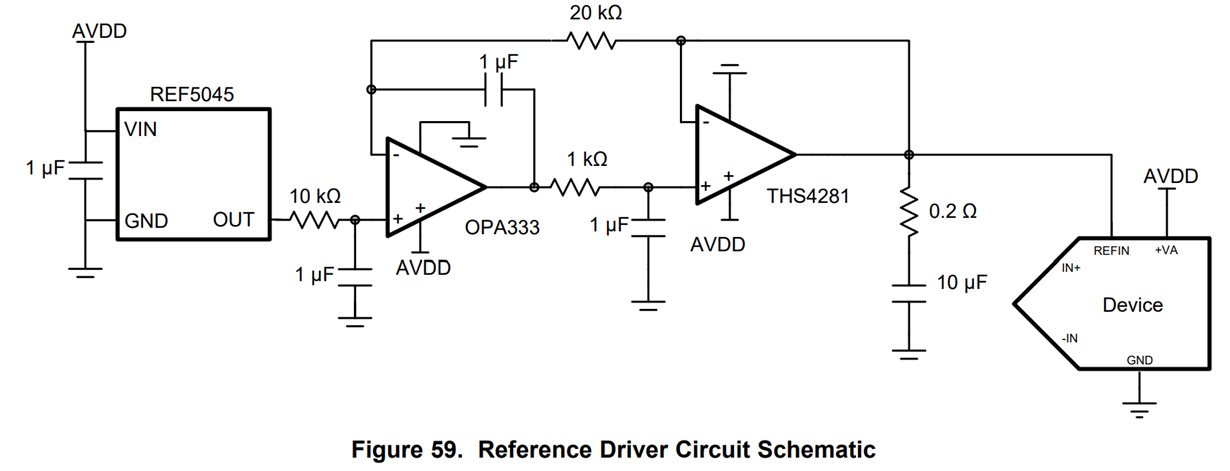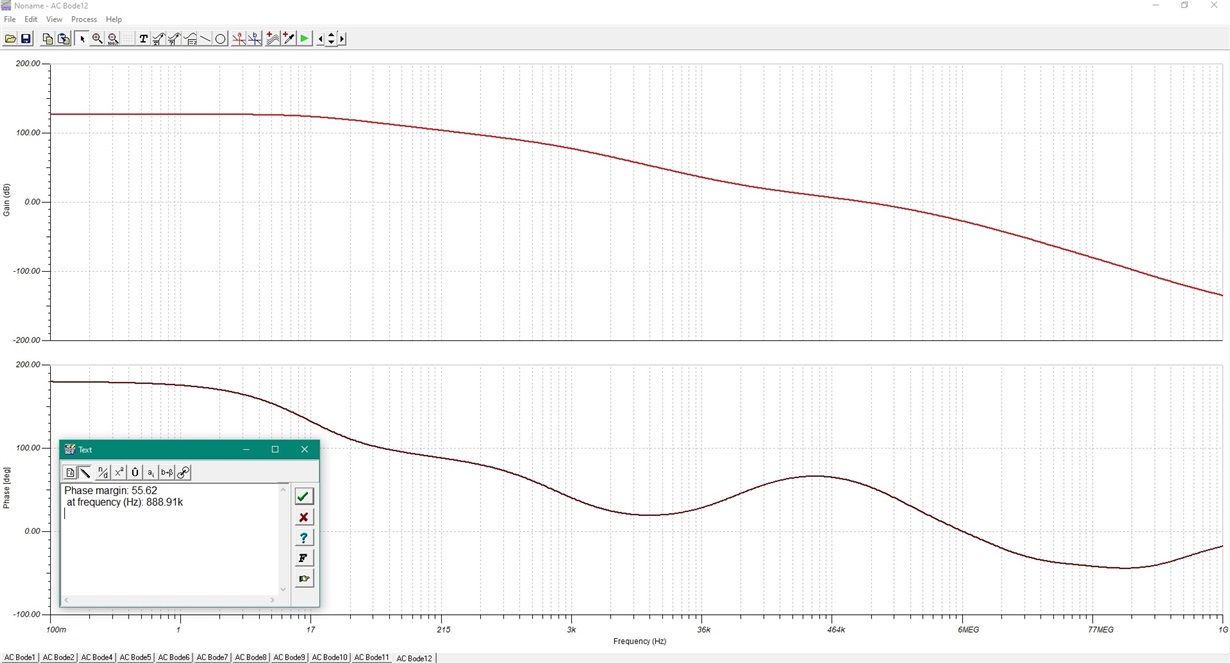Other Parts Discussed in Thread: OPA333, OPA388, THS4281, OPA350, DAC8552, TINA-TI
Hi everyone,
I'm currently working on an ECG acquisition test-bed for analog front-ends. The ADC of choice was the ADS8339 to sample the ECG AFE's output voltage.
I'm thinking about incorporating the reference driver circuit suggested in the datasheet, but I can't find the circuit expressions.
I don't really understand the behaviour of the circuit. PSpice AC simulations reveal that the circuit behaves as a low-pass filter with low-Q.
Circuit expressions that I've taken using KCL show that the circuit has three poles and one zero, if I'm not wrong in calculations or missing something.
The circuit also reminds me of a non-inverting integrator/DC servo, but I'm not sure if it exhibits this behaviour.
Can you help with circuit expressions? I need to know how the circuit behaves, its cut-off frequency, Q-factor and if applicable, the integrator time constants.
As the application is ECG the cut-off frequency must be lower (than 1 Hz) than its current value (of about 17 Hz).
Is it ok to replace the OPA333 with an OPA388 and the THS4281 with an OPA350?
What about exchanging the 1kOhm resistor for a 10kOhm resistor?
Circuit schematic from datasheet attached.
PS:
Message for the forum administrator/reviewer
I've posted (or tried to post) a similar thread before, please delete the previous thread if not approved.
Kind regards,
Daniel Almeida




